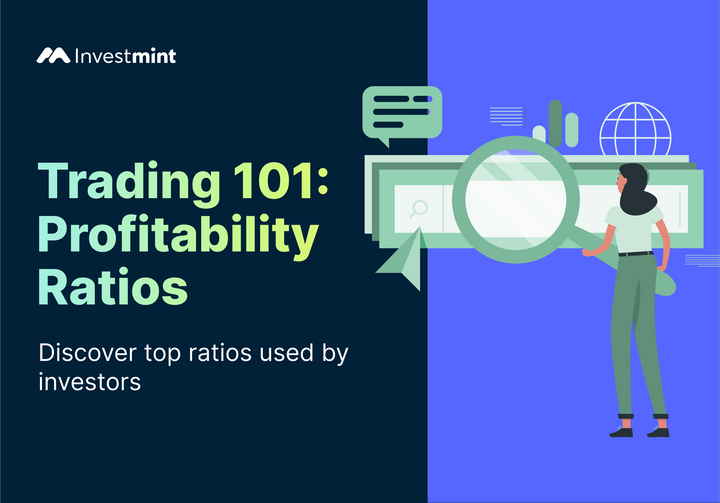Intraday Trading: Rules for Picking Intraday Stocks
Intraday trading is one of the ways to participate in the stock markets and make good returns. However, there are certain rules and techniques that you should know before you start.

There are many ways to make money in the stock market. While long-term investing is one of them, the other route that you may take is intraday trading. Intraday trading is like a thrilling rollercoaster ride, where you can experience the highs of making a successful trade and the lows of a losing trade, all in the span of a single day.
It's all about building and executing strategies creatively, where you must use your analytical skills to read market trends and identify potential opportunities. You need to be able to think on your feet and make quick decisions based on the ever-changing market conditions. It's a high-stakes game that requires a combination of discipline, patience, and courage.
In this article, we’ll walk you through what intraday trading is, how to select stocks for intraday trading and some rules for intraday trading. So buckle up before you actually hit the markets.
What’s Intraday Trading?
As the name suggests, intraday trading involves buying and selling stocks or derivatives on the same day. Traders who enter the market within the span of a day are called intraday traders. Intraday trading is characterised by many small-profit trades, which add up in the long term. As simple as it sounds, you need extensive market knowledge and precise entry and exit plans to succeed at intraday trading. However, you can learn how to select intraday stocks with time and experience.
Picking Stocks For Intraday Trading- Cash vs Derivatives Segment?
There are two types of markets through which one can invest/trade in stocks – the equity market, also known as the spot or cash market, and the derivative market, also known as the futures and options market.
In the cash market, intraday traders buy and sell stocks, commodities, or currencies with the intention of making a profit within the same trading day. To do so, you must have the required funds in your account to execute the trade, and the profit or loss made is then settled in cash. Intraday trading in the cash market is generally considered less risky than derivatives trading, as you only risk the money you have in your account.
On the other hand, intraday trading in the derivatives market involves trading in financial instruments such as futures or options. Derivatives trading allows you to take advantage of leverage, which means you can control a large position with relatively smaller capital. However, this also means that the potential for profit or loss is magnified, making derivatives trading a high-risk, high-reward proposition.
Rules To Know When Picking Stocks For Intraday Trading
You must remember certain intraday rules when trying to understand how to find stocks for intraday trading. The best strategy for intraday trading involves a combination of technical and fundamental analysis. Here are the top rules for intraday trading to keep in mind:
1. Choose Liquid Stocks
Liquidity means a stock can be bought and sold easily without affecting its price. Trading and investing in liquid stocks is important because it allows you to sell at a price point that can make you a profit. Liquid stocks tend to have high volumes. While some stocks may have high liquidity at low prices, the volumes can drop beyond a certain level. Typically, large-cap and mid-cap stocks are more liquid than small-cap stocks.
2. Keep an Eye for Volatility
While trading intraday, volatility is your best friend. Because highly volatile stocks tend to change prices within minutes or seconds. At the same time, stocks with low volatility have stable prices with less movement on either side. Hence, stocks with high volatility can offer greater profit potential for intraday traders, but they also come with greater risk. You can use technical indicators, such as the Average True Range (ATR), to assess the volatility of a stock.
3. Watch The Market Trend
Market trends very often determine stock price movements. If you can follow the current market trend and take trades in the same direction, you can maximise your profits. Choose a stock that has the potential to rise when the market is bullish and vice versa.
Also, remember that the market moves in waves, and you should focus on taking long positions during an uptrend and short positions during a downtrend. There are also times when there is a weak or no trend at all in the market. Here, aim for smaller targets, stop losses, or be patient and avoid trading in such times.
4. Invest In Correlated Stocks
Investing in stocks that are highly correlated to a sector or an index is one of the best intraday trading strategies. For instance, a strong Indian rupee against the US dollar could affect all information technology companies dependent on US markets. A stronger rupee implies lower earnings for IT companies, while a weakening of the rupee will result in higher export incomes for these companies.
5. Integrate technical Analysis into Your Strategies
Many seasoned Intraday traders use multiple charting tools, research and analytics to determine the stocks' next move. Technical analysis helps identify major support and resistance levels that are crucial for a stock's past performance. Watch out for the resistance and support levels of your selected stocks. Intraday traders should develop the skills to read technical charts. Being well-versed with trading indicators such as ‘Moving Averages’, ‘RSI’, ‘MACD’, etc., will help you assess patterns and trade them better in the stock markets
6. Look for News Catalysts
As much as technical analysis is important, the fundamental analysis adds more security to your trades. For instance, any upcoming news report or earnings release that talks about a company's performance and any external factors could affect the stock price. As a trader, look for news catalysts, such as earnings reports or major announcements, that could impact the stock price and try capitalising on them.
How Can Trading Models Help With Intraday Trading?
The above-mentioned points are important for every trader. However, you can also use trading models, which are mathematical algorithms used to analyse financial data and make trading decisions. They are designed to help traders identify profitable opportunities in financial markets and to execute trades based on those opportunities.
Trading models can be based on various approaches, including technical, fundamental, and statistical analysis. They typically incorporate various inputs, such as price, volume, and other market indicators, to generate trading signals informing the trader when to enter or exit a trade.
You can have a look at the Investmint app, where you will find different trading models that can help reduce the risk and volatility associated with intraday trading. You can choose the best intraday stocks using Investmint trading models.
For instance, our Quick Short trading model focuses on the mean reversion factor, where you can benefit from the correction in stocks that have shot up considerably. Using a combination of statistical metrics and a proprietary price ranking system, the model helps identify the best stocks to short from the NIFTY 500 universe. Like this, there are numerous models that you can deploy and reap the benefits.
Summary
- In summary, intraday trading is basically characterised by buying low and selling high.
- Selecting stocks for intraday trading involves isolating the current market trend from any surrounding noise and capitalising on that trend.
- Intraday traders should select stocks with high volume, ample liquidity, and medium to high volatility.
- Following market trends gives an idea of stock movements; investing in correlated stocks help traders book profits in intraday trading.
- Studying the market trends and analysing stock performances through charting tools help intraday traders make informed decisions.
- Investmint models such as QS and BU can help you improve your intraday trading strategies.
Want to receive the next blog in your mail? Click on the subscribe button and receive the next blog in your mail.



